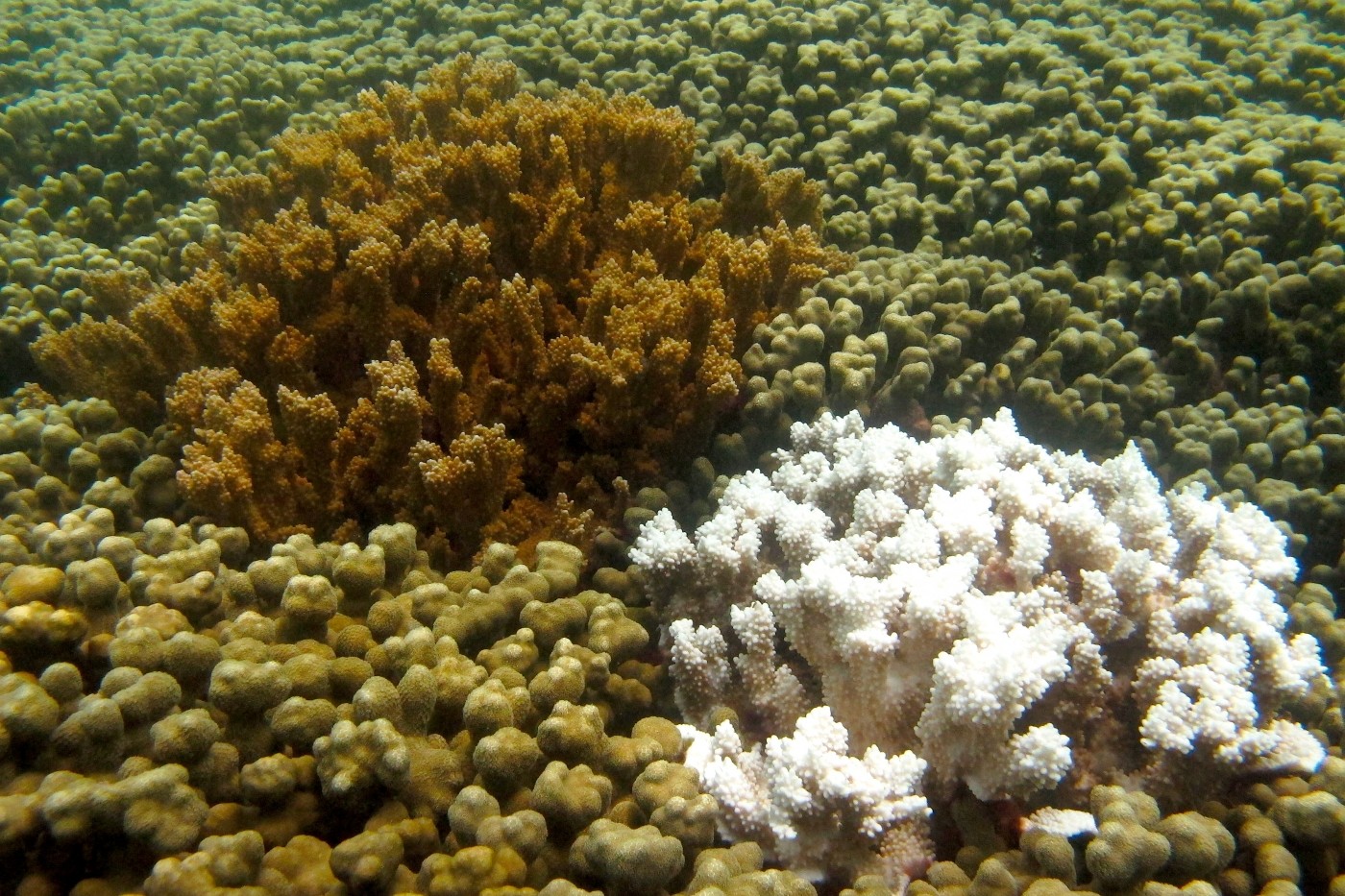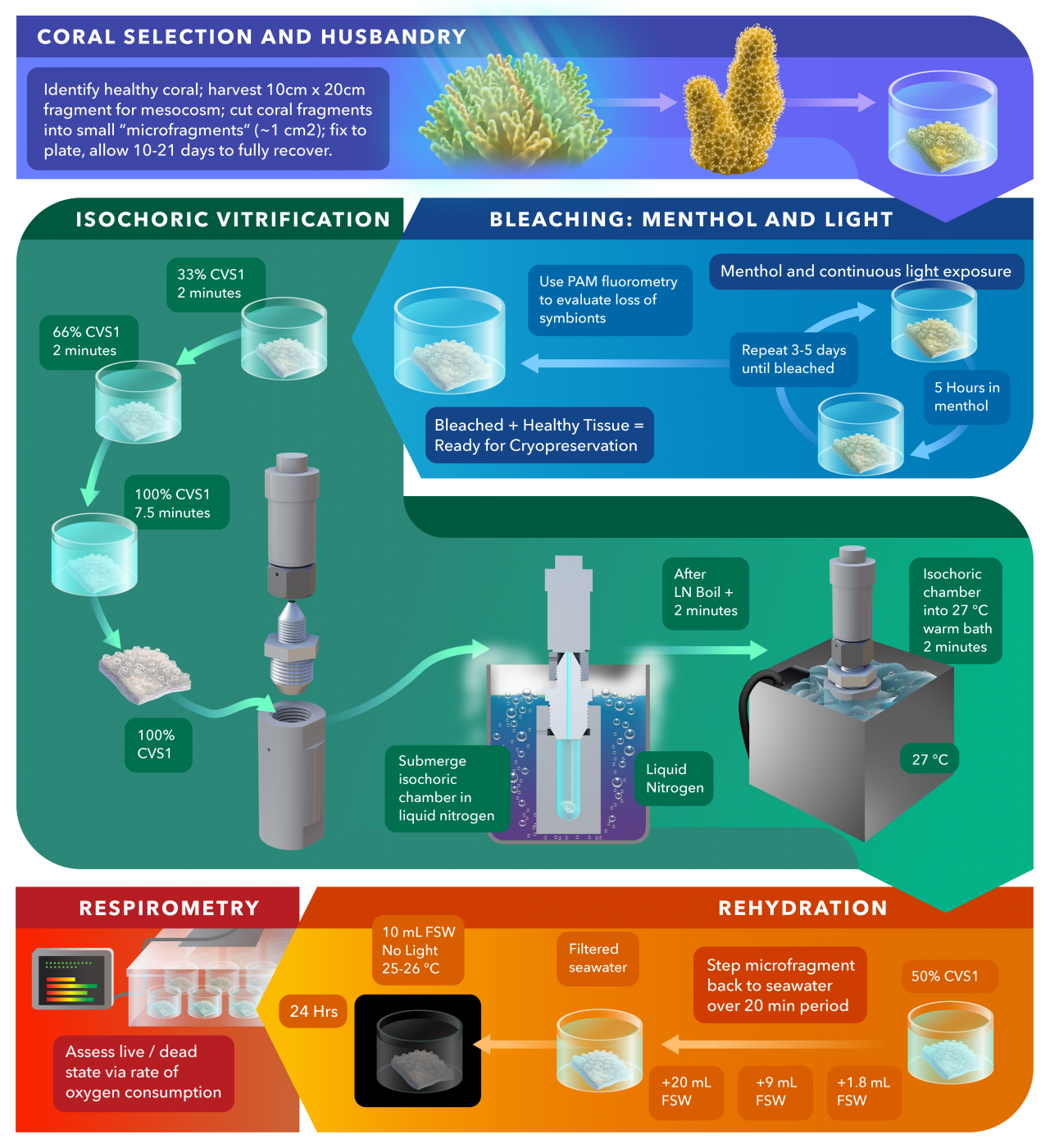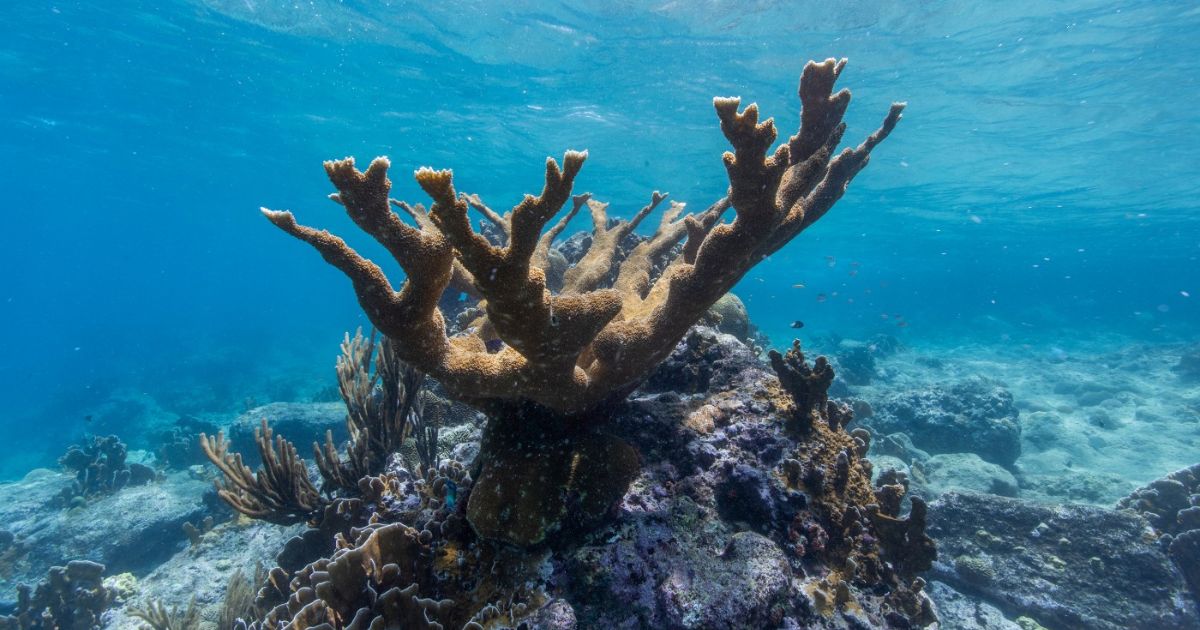Smithsonian’s National Zoo and Conservation Biology Institute (NZCBI) researchers have achieved a breakthrough in the fight to save the world’s coral reefs from climate change annihilation, and it may further the goal of cryopreserving human organs.
In a paper published in Nature Communications, Mary Hagedorn and E. Michael Henley, research scientists at NZCBI, and colleagues Matt Powell-Palm, from Texas A&M University and Boris Rubinsky at the University of California, Berkeley, describe the first successful technique for cryopreserving and reviving entire coral fragments. This milestone was conducted in Kaneohe Bay, Hawaii, at the Hawaii Institute of Marine Biology and heralds a new age for cryopreservation and coral conservation because the coral fragments are among the most complex biological systems ever successfully ushered through the cryogenic cooling and thawing process. This proof-of-concept, funded by conservation organization Revive and Restore, opens the door to collecting and preserving coral fragments easily and rapidly at an urgent moment for coral worldwide.
“This process holds enormous promise to conserve the biodiversity and genetic diversity of coral,” Hagedorn said. “If we can scale this up and refine the post-thaw husbandry, we will be able to work year-round rather than just a few days during spawning seasons. If we can do that, this will be a really viable process that changes how we see the security of corals going forward.”
Recent climate models estimate if greenhouse gas emissions continue unabated, 95% or more of the world’s corals could die by the mid-2030s. This leaves precious little time to safeguard their estimated $10 trillion annual economic value or the innumerable other marine species that rely on corals for their livelihood.
NZCBI is a leader in the field of coral cryopreservation and is a member of the Coral Biobank Alliance—a global network of coral experts preserving corals for restoration and research that aims to collect and store genetic material from all known species of corals by 2030. Globally, the collection currently includes sperm cells from more than 50 species and live corals from over 200 species.
Current coral cryopreservation techniques rely largely on freezing sperm and larvae, which can only be collected during fleeting spawning events, which occur only a few days a year for a species. This creates a logistical challenge for researchers and conservationists, and it limits the speed with which coral species can be successfully cryo-banked. To complicate matters further, warming oceans and increasingly frequent marine heatwaves mean corals can be biologically stressed such that their reproductive material is too weak to stand up to the rigors of being frozen and thawed.
 (Image credit: Roshan Patel/Smithsonian's National Zoo and Conservation Biology Institute)
(Image credit: Roshan Patel/Smithsonian's National Zoo and Conservation Biology Institute)
With these limitations in mind, Hagedorn and her colleagues started their work to cryopreserve and revive entire fragments of coral in 2019. The small fragments of coral used in this study feature about 20 individual coral polyps embedded in a calcium carbonate skeleton. This large mass of tissue with tens of thousands of cells and a skeleton is far more complex to cryopreserve than a single cell, such as a sperm. To get around this problem, Hagedorn collaborated with Powell-Palm and Rubinsky focusing on a process called isochoric vitrification.
This technique minimizes the toxicity of the cryopreservation solution and prevents the formation of ice by placing the biological material inside a rigid aluminum chamber. When researchers seal the coral fragment inside the solution-filled chamber and rapidly cool it with liquid nitrogen, any water inside tends to not expand and form ice crystals that can damage tissue. If ice starts to form, the unyielding walls of the aluminum chamber restrict its growth. Instead of ice formation, isochoric vitrification preserves the coral polyps in a glass-like state that avoids damage to their delicate cells.
But getting isochoric vitrification to work with corals was not without its challenges. For example, researchers discovered the corals needed to be bleached prior to cryopreservation. In nature, coral bleaching occurs when corals get so stressed—usually from excessive heat—they eject the photosynthetic algae with which they normally have a healthy symbiotic relationship and begin to starve. But during cryopreservation the coral’s symbionts created problems because the symbionts reacted differently to the process than the corals, creating damaging pockets of ice. To bleach the corals prior to cryopreservation, the team used a combination of menthol and intense light. Somewhat counterintuitively, the team noted in the lab the bleached corals appeared quite healthy, possibly because they ingested their damaged symbionts, rather than expelling them.
 (Image credit: Andy Grams)
(Image credit: Andy Grams)
Hagedorn and her colleagues tested the isochoric vitrification technique with thumbnail-sized fragments of the finger coral (Porites compressa) from Hawaii. After vitrifying the bleached coral fragments inside their aluminum chambers by immersing them in a bath of liquid nitrogen, the chambers were warmed in a 27-degree Celsius water bath for two minutes. Once the chamber warmed up, the fragments were transferred to seawater and allowed to recover. When assessing the health of the revived corals, Hagedorn and her colleagues found the rate of oxygen consumed by the vitrified-thawed corals was comparable to those that were never cooled. The team stopped their oxygen measurements at 24 hours because of a desire to separate the success of the vitrification process from husbandry issues that will require ongoing refinement.
Henley and the collaborative team are currently working on the problem of how to keep corals alive beyond 24 hours post-thaw, and the team is exploring the use of antibiotics, antioxidants and probiotics to bolster the corals’ microbiomes and help them survive.
“Our goal is to cryopreserve as many species of coral as possible by 2030,” Henley said. “If this is successful, we may be able to do that. At a time when climate change is moving so fast, this gives us an amazing ability to stop time here in the 2020s.”
NZCBI’s coral conservation research program aligns with United Nations Sustainable Development Goals and is part of the Smithsonian’s “Life on a Sustainable Planet” initiative to collect new data about the changing planet, implement holistic and multi-scale approaches to environmental conservation and educate the world about why and how sustainable solutions to climate change can benefit people and nature.



